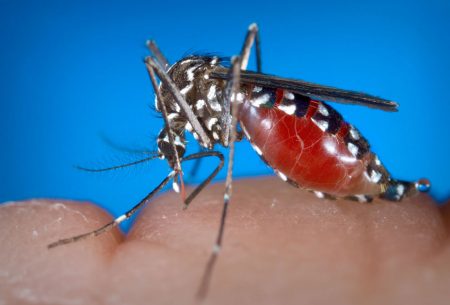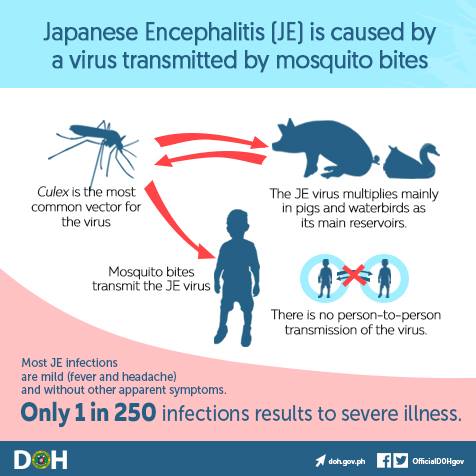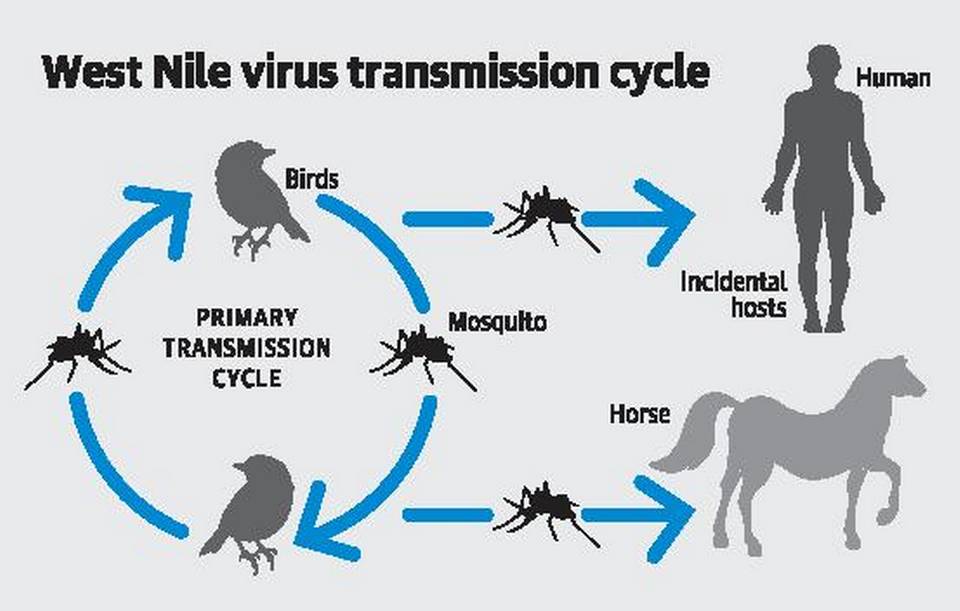West Nile Virus 22/05/2019 – Posted in: Daily News – Tags: Japanese Encephalitis, West Niel Virus
WEST NILE VIRUS
For: Preliminary & Mains
Topic covers: WNV- causes, transmission, outbreak & symptoms, Japanese encephalitis
News Flash
Along with four cases of West Nile Fever, three Japanese Encephalitis cases were reported from the state of Kerala.
- The presence of the West Nile virus was identified from the mosquito samples and serum samples of the close contacts of the infected persons.
- These samples were collected from Chathamangalam, Kundungal, Vellayil areas by a team from the National Centre for Disease Control.
West Nile Virus
- West Nile virus can cause a fatal neurological disease in humans.
- However, approximately 80% of people who are infected will not show any symptoms.
- West Nile virus is mainly transmitted to people through the bites of infected mosquitoes.
- Mosquitoes become infected when they feed on infected birds, which circulate the virus in their blood for a few days.
- The virus can cause severe disease and death in horses.
- Vaccines are available for use in horses but not yet available for people.
- Birds are the natural hosts of West Nile virus.
- Human infection is most often the result of bites from infected mosquitoes of the Culex genus.
West Nile Virus (WNV) is a member of the flavivirus genus and belongs to the Japanese encephalitis antigenic complex of the family Flaviviridae.
Outbreaks
- West Nile Virus (WNV) was first isolated in a woman in the West Nile district of Uganda in 1937.
- It was identified in birds (crows and columbiformes) in Nile delta region in 1953.
Transmission
Human infection is most often the result of bites from infected mosquitoes. Mosquitoes become infected when they feed on infected birds, which circulate the virus in their blood for a few days. The virus eventually gets into the mosquito’s salivary glands. During later blood meals (when mosquitoes bite), the virus may be injected into humans and animals, where it can multiply and possibly cause illness.
- The virus may also be transmitted through contact with other infected animals, their blood, or other tissues.
- A very small proportion of human infections have occurred through organ transplant, blood transfusions and breast milk. There is one reported case of transplacental (mother-to-child) WNV transmission.
- To date, no human-to-human transmission of WNV through casual contact has been documented, and no transmission of WNV to health care workers has been reported when standard infection control precautions have been put in place.
Symptoms
Symptoms include fever, headache, tiredness, and body aches, nausea, vomiting, occasionally with a skin rash (on the trunk of the body) and swollen lymph glands.
Japanese encephalitis
- Japanese encephalitis virus (JEV) is a flavivirus related to dengue, yellow fever and West Nile viruses, and is spread by mosquitoes.
- JEV is the main cause of viral encephalitis in many countries of Asia with an estimated 68 000 clinical cases every year.
- Although symptomatic Japanese encephalitis (JE) is rare, the case-fatality rate among those with encephalitis can be as high as 30%. Permanent neurologic or psychiatric sequelae can occur in 30%–50% of those with encephalitis.
- 24 countries in the WHO South-East Asia and Western Pacific regions have endemic JEV transmission, exposing more than 3 billion people to risks of infection.
- There is no cure for the disease. Treatment is focused on relieving severe clinical signs and supporting the patient to overcome the infection.
- Safe and effective vaccines are available to prevent JE. WHO recommends that JE vaccination be integrated into national immunization schedules in all areas where JE disease is recognized as a public health issue.
Outbreaks
- The first case of Japanese encephalitis viral disease (JE) was documented in 1871 in Japan.
- Major outbreaks of JE occur every 2-15 years. JE transmission intensifies during the rainy season, during which vector populations increase.
- The spread of JEV in new areas has been correlated with agricultural development and intensive rice cultivation supported by irrigation programmes.
Symptoms
Most JEV infections are mild (fever and headache) or without apparent symptoms, but approximately 1 in 250 infections results in severe clinical illness. The incubation period is between 4-14 days. In children, gastrointestinal pain and vomiting may be the dominant initial symptoms. Severe disease is characterized by rapid onset of high fever, headache, neck stiffness, disorientation, coma, seizures, spastic paralysis and ultimately death.
Transmission
JEV is transmitted to humans through bites from infected mosquitoes of the Culex species (mainly Culex tritaeniorhynchus). Humans, once infected, do not develop sufficient viraemia to infect feeding mosquitoes. The virus exists in a transmission cycle between mosquitoes, pigs and/or water birds (enzootic cycle).
Source: The Hindu
You can follow us on LinkedIn and for more updates related to UPSC IAS Preparation, Like our Facebook Page and subscribe our Diligent IAS Youtube Channel
Also Read Related Daily News



